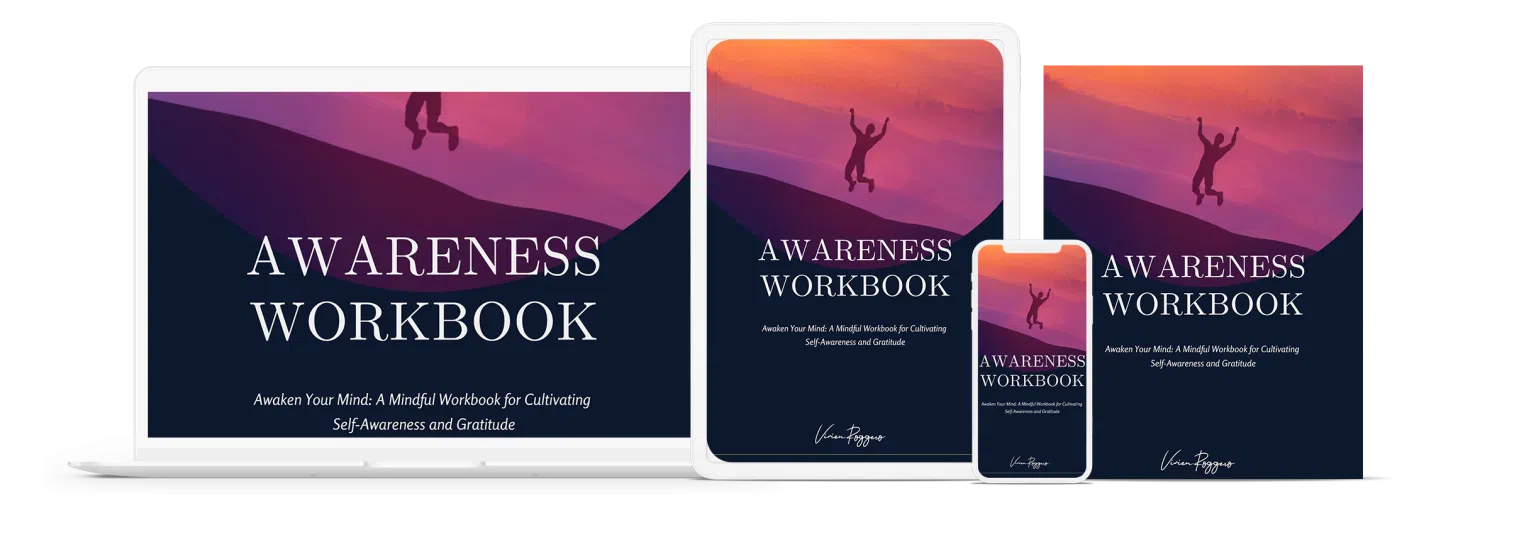In the complex world of human relationships, there’s one quality that surfaces repeatedly as a catalyst for healthy, thriving connections: flexibility. But what exactly do we mean by flexibility in relationships? In essence, it refers to the capacity to adapt to changes, accommodate differences, and maintain harmony amidst life’s inevitable uncertainties. Far from being a sign of weakness or inconsistency, flexibility is a strength that breathes life into our relationships, enabling them to grow and evolve alongside us. In this exploration, we delve into the multifaceted nature of flexibility and its vital contribution to relationship well-being.
Defining Flexibility in Relationships
Flexibility in relationships can be defined as the ability to adapt to changes, negotiate differences and respond positively to the evolving needs of oneself and one’s partner. It’s about being open to shifting dynamics, navigating unexpected turns, and continuously striving to balance personal needs with those of the relationship.
The Importance of Adaptability in Nurturing Healthy Connections
Adaptability is the cornerstone of nurturing healthy connections. Relationships, like the individuals within them, are living entities—they grow and change over time. Adaptability ensures that as our individual selves evolve, our relationships can adjust and grow alongside us, fostering a connection that’s organic, dynamic, and resilient.
Flexibility significantly contributes to relationship well-being. It allows for more effective communication, resilience in the face of challenges, and a deeper understanding of one’s partner. By embracing flexibility, we create an environment that fosters mutual respect, understanding, and long-lasting connection.
Understanding Flexibility in Relationships
Definition of Flexibility in a Relationship Context
In a relationship context, flexibility refers to the willingness and ability to adapt one’s behavior, expectations, and attitudes to the fluctuating dynamics of the relationship. It’s about embracing change, managing conflicts constructively, and nurturing a shared life that respects and accommodates the individuality of both partners.
Different Dimensions of Flexibility: Emotional, Communication, Lifestyle
Flexibility in relationships encompasses several dimensions—emotional flexibility, communication flexibility, and lifestyle flexibility. Emotional flexibility involves managing and expressing emotions in a manner that nurtures the relationship. Communication flexibility is about adjusting communication styles to foster mutual understanding. Lifestyle flexibility relates to accommodating each other’s way of life, including habits, routines, and preferences.
The Interplay Between Flexibility and Relationship Satisfaction
There’s a strong interplay between flexibility and relationship satisfaction. Flexible couples tend to navigate disagreements more effectively, adapt to life changes more seamlessly, and appreciate their partners’ evolving needs and desires. This adaptability contributes to heightened relationship satisfaction, providing a sense of harmony and shared growth.
Flexibility in Communication
Active Listening as a Pillar of Communicative Flexibility
Active listening is a pillar of communicative flexibility. It’s about genuinely hearing and understanding your partner’s viewpoint, even if it contrasts with yours. By actively listening, we demonstrate respect for our partner’s thoughts and feelings, strengthening the bonds of mutual understanding and intimacy.
Adjusting Communication Styles to Meet Partner’s Needs
Adjusting communication styles to meet a partner’s needs is a key aspect of flexibility. We all have unique communication preferences—some of us are more direct, others more subtle, some prefer verbal expression, others written. Being able to adjust your communication style to align with your partner’s can significantly enhance mutual understanding.
Navigating Conflict with Openness and Willingness to Compromise
Flexibility plays an integral role in navigating conflict. It involves approaching disagreements with an open mind and a willingness to compromise. Rather than rigidly sticking to one’s viewpoint, flexible conflict resolution seeks to find solutions that respect both partners’ perspectives, fostering resolution and mutual satisfaction.
Embracing Change and Growth
How Flexibility Supports Individual and Relationship Growth
Flexibility plays a vital role in supporting both individual and relationship growth. By being flexible, we allow ourselves and our relationships the room to evolve, learn, and adapt. We enable individual self-growth to nurture the relationship, and we allow the growth of the relationship to foster personal development.
The Role of Adaptability in Facing Life Transitions Together
Adaptability has a key role in facing life transitions together. Whether it’s a career change, a move to a new city, or starting a family, life transitions impact relationships. With adaptability, we can navigate these transitions more effectively, transforming potential challenges into opportunities for shared growth.
Encouraging Mutual Support for Personal Development
Flexibility encourages mutual support for personal development. It’s about recognizing that as we grow and change, our needs and desires might shift too. By supporting each other’s personal development, we can ensure that our relationship evolves alongside us, strengthening our shared journey.
Balancing Independence and Togetherness
Respecting Individual Autonomy Within the Relationship
Flexibility in a relationship also involves respecting individual autonomy. It’s about acknowledging that while togetherness brings joy and comfort, each individual also needs space and freedom for self-expression and growth. Respecting this autonomy helps maintain a healthy balance between individuality and unity.
Negotiating Boundaries to Foster Independence
Negotiating boundaries is an important aspect of relationship flexibility. Setting and agreeing on boundaries helps ensure that both partners can maintain their independence while contributing to the shared life. Flexibility allows these boundaries to be reassessed and adjusted over time, fostering a growing, adaptable relationship.
Finding Harmony Between Time Together and Personal Space
Finding harmony between time spent together and personal space is a testament to flexibility in a relationship. It requires a delicate balance, a mutual understanding that while shared experiences are important, so too are individual pursuits. Flexibility allows for this equilibrium to be continually achieved, making the relationship more resilient and satisfying.
Flexibility in Shared Responsibilities
Equitable Distribution of Tasks and Responsibilities
Flexibility is vital in the equitable distribution of tasks and responsibilities within a relationship. It’s about understanding and adapting to each other’s strengths and weaknesses, capacities, and schedules. A flexible approach to shared responsibilities ensures fairness, fosters mutual respect, and enhances teamwork.
Adapting to Changes in Roles and Responsibilities
The roles and responsibilities within a relationship are not static—they change as the relationship evolves and different life stages are encountered. Flexibility allows couples to adapt to these changes, ensuring that roles and responsibilities can be reassigned and rebalanced when necessary, maintaining equilibrium in the relationship.
Strategies for Collaborative Decision-Making
Strategies for collaborative decision-making involve flexibility. It’s about being open to your partner’s ideas, finding common ground, and making decisions that take into account the needs and aspirations of both partners. This flexible approach to decision-making fosters mutual understanding and enhances the sense of unity in the relationship.
Adapting to External Stressors
Navigating External Challenges as a Team
Flexibility aids in navigating external challenges as a team. Life will undoubtedly throw curveballs—financial concerns, health issues, job loss, to name a few. By tackling these challenges together with a flexible mindset, couples can strengthen their bond and resilience.
Supporting Each Other Through Difficult Times
Supporting each other through difficult times is an important aspect of relationship flexibility. It involves understanding your partner’s needs during their tough times and adjusting your support accordingly. It’s about standing together, flexible yet unwavering, in the face of adversity.
Flexibility as a Buffer Against Relationship Stressors
Flexibility serves as a buffer against relationship stressors. It allows couples to adapt to changes, manage stress, and weather life’s storms together. By being flexible, couples can maintain relationship satisfaction and cohesion, even during challenging times.
Flexibility and Intimacy
Creating Space for Emotional Vulnerability
Flexibility creates space for emotional vulnerability—an essential ingredient of deep intimacy in a relationship. It’s about being open to express feelings, and equally open to receive and understand your partner’s emotions. This flexible, empathetic exchange fosters deep emotional connectivity.
Adjusting Intimacy Dynamics to Meet Changing Needs
Intimacy dynamics adjust as a relationship grows, and flexibility is key in navigating these changes. It’s about understanding, respecting, and adapting to your partner’s changing needs for emotional or physical closeness. This flexibility nurtures a dynamic intimacy that grows and deepens over time.
Nurturing Emotional Connection Through Flexibility
Nurturing emotional connection through flexibility involves open communication, active listening, and adaptability to each other’s emotional states. It’s about being present, understanding, and supportive. This flexible approach to emotional connection nourishes the relationship, cultivating deeper bonds of understanding and love.
Overcoming Relationship Ruts
Recognizing and Addressing Patterns of Stagnation
Recognizing and addressing patterns of stagnation is an important aspect of flexibility in relationships. It’s about acknowledging when your relationship is in a rut and taking adaptive actions to rekindle the spark. With a flexible mindset, you can transform periods of stagnation into opportunities for reconnection and growth.
The Transformative Power of Flexibility in Breaking Routines
Flexibility has a transformative power in breaking routines. It’s about being open to new experiences, stepping out of comfort zones, and infusing freshness into the relationship. By embracing change and novelty, you can reignite passion, bring joy and ensure your relationship remains vibrant and fulfilling.
Infusing Novelty and Spontaneity into the Relationship
Infusing novelty and spontaneity into the relationship is a hallmark of flexibility. It’s about embracing the unexpected, being spontaneous, and making room for surprises. This freshness can reignite the spark in a long-term relationship, keeping the connection fun, exciting, and profoundly satisfying.
Communicating Expectations and Boundaries
Open Dialogue About Personal Needs and Expectations
Open dialogue about personal needs and expectations is vital in a flexible relationship. It’s about creating a safe environment to express one’s needs, aspirations, and boundaries. Flexibility in communication ensures that these discussions are effective, mutual, and lead to a deeper understanding of each other.
Establishing and Respecting Relationship Boundaries
Establishing and respecting relationship boundaries is a testament to flexibility. It’s about understanding that boundaries are crucial for maintaining personal well-being and health of the relationship. Flexibility means these boundaries can be discussed, reassessed, and adapted over time, ensuring they remain relevant and respected.
The Role of Flexibility in Shifting Boundaries Over Time
Flexibility plays a critical role in shifting boundaries over time. As individuals evolve and the relationship matures, the initial boundaries may need adjustments. Flexibility allows for this continuous negotiation, ensuring the boundaries grow and change with the relationship, keeping it healthy and sustainable.
Flexibility and Forgiveness
The Connection Between Flexibility and Forgiveness
There’s a profound connection between flexibility and forgiveness. To forgive, one needs to be flexible enough to let go of past hurts, understand the situation from a different perspective, and open one’s heart to reconciliation. Flexibility in forgiveness can significantly heal wounds, restore trust, and strengthen the relationship.
Letting Go of Resentment Through Adaptive Mindsets
Letting go of resentment requires an adaptive mindset—an embodiment of flexibility. It’s about acknowledging the hurt, understanding the circumstances, and moving forward without holding onto the past. This adaptive, flexible mindset fosters forgiveness and reconciliation, leading to a more harmonious relationship.
Rebuilding Trust and Connection Through Flexibility
Rebuilding trust and connection requires flexibility. It involves understanding that people can change, and past mistakes do not define the future. By maintaining a flexible and forgiving mindset, you create space for trust and connection to be rebuilt, paving the way for a stronger, more resilient relationship.
Strategies for Cultivating Flexibility
Developing Emotional Intelligence for Increased Flexibility
Developing emotional intelligence can significantly increase flexibility. Emotional intelligence involves understanding one’s emotions and those of others. This understanding fosters flexibility as it equips you with insights to adapt your behavior, manage conflicts effectively, and respond empathetically to your partner’s emotions.
Regular Check-Ins to Assess and Adjust Relationship Dynamics
Regular check-ins are an effective strategy for cultivating flexibility. These provide an opportunity to assess and adjust relationship dynamics, allowing for continuous growth and adaptation. Open, honest dialogues can shed light on areas that need more flexibility, fostering mutual understanding and nurturing the relationship.
Seeking Professional Guidance When Flexibility Challenges Arise
When flexibility challenges arise, seeking professional guidance can be immensely helpful. Life coaches or therapists can provide valuable tools and strategies to enhance flexibility. They can facilitate constructive dialogues and provide unbiased guidance, helping couples navigate their journey towards a more flexible, resilient relationship.
Real-Life Examples of Flexibility in Relationships
Narratives of Couples Who Successfully Navigated Challenges Through Flexibility
There are numerous narratives of couples who have successfully navigated challenges through flexibility. Whether it’s about adapting to a partner’s job relocation, accepting changes in lifestyle after becoming parents, or accommodating a partner’s new-found hobby, these stories underline the remarkable strength and resilience that flexibility brings to a relationship.
Lessons Learned from Relationship Stories Emphasizing Adaptability
Relationship stories emphasizing adaptability offer valuable lessons. They highlight the importance of open communication, the courage to embrace change, and the love that understands and accepts. These stories serve as reminders of the transformative power of flexibility in nurturing healthy, enduring relationships.
Inspiring Examples of Long-Term Relationship Flexibility
There are numerous inspiring examples of long-term relationship flexibility. These are couples who have weathered numerous storms and celebrated many milestones, all the while adapting, growing, and loving. Their stories stand testament to the fact that with flexibility, a relationship can not only endure but also thrive and blossom over time.
Conclusion
In conclusion, flexibility plays a crucial role in fostering healthy relationships. It’s not just about being able to bend and twist to accommodate each other’s needs, but also about adapting to changes, managing conflicts constructively, and nurturing a shared journey of growth and development.
To all couples embarking on this journey—remember that adaptability is a continuous practice. It’s not a destination but a path—one that encourages learning, understanding, and growth. Embrace this journey with an open heart, knowing that every step towards being more adaptable is a step towards a stronger, healthier relationship.
Finally, it’s important to highlight the enduring strength and resilience that flexibility brings to relationships. With flexibility, relationships can weather storms, celebrate joys, and go through an endless process of learning and growing. In its essence, flexibility is a testament to the limitless capacity of love—it’s a quality that transforms relationships, making them more beautiful, enriching, and deeply satisfying.













![2024 Awareness Wordbook by Vivien Roggero [Self-discovery tools]](http://vivienroggero.com/wp-content/uploads/2023/04/Book-Awarness-Full-pack.png)